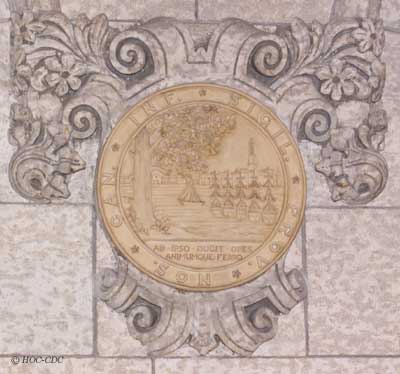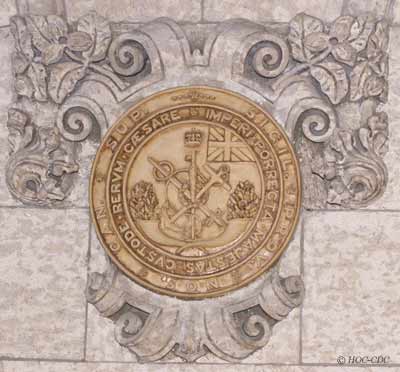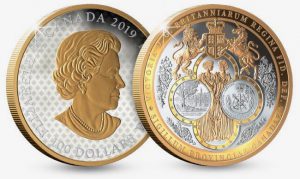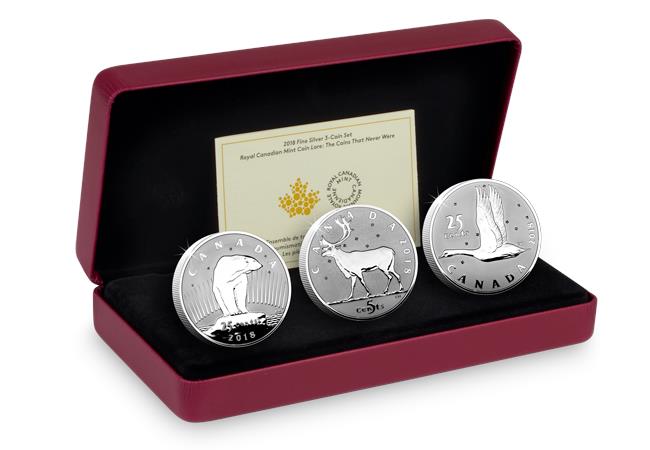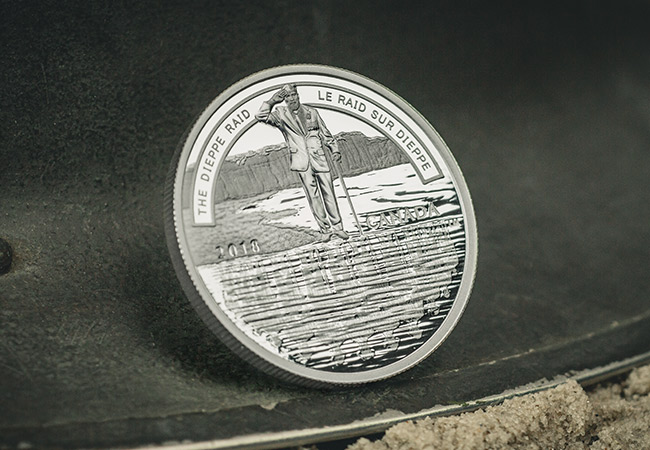Posts Tagged ‘Royal Canadian Mint’
The Great Significance of Great Seals
Everyday we’re inundated with symbols and logos, and many of them pass us by. Be it on an advert at a bus stop, on our favourite brand of coffee, or even the Westminster Collection logo that was at the top of this blog. They’re everywhere. And even if we do pay attention to them, we don’t necessarily stop and think what it symbolises – I know I’m certainly guilty of this.
But there’s perhaps nothing quite as symbolic as a nation’s Great Seal – and they’re fascinating to boot! Great seals have been around since the Middle Ages, and typically feature a nation’s coat of arms or an allegorical image, as was common practice during this era to embody political entities like countries or provinces as a Grecian-style female figure.
In centuries when few people could read or write, the seal provided a pictorial expression of state approval which all could understand. They’re used as a guarantee of the most important and solemn records and documents, such as laws and treaties.
Generally speaking, the design of a Great Seal rarely changes, only after the ascension of a monarch. It is the one thing that connects all heads of state to their predecessors and those yet to come; an eternal bond.
But a delve into the Canadian archives shows us that the Great Seal of Canada has had several incarnations, and not just to mark a new head of state. Instead, each one marks a significant moment in Canadian history.
One of the most important iterations of the seal is the Great Seal of the Province that was used from 1841 to 1867. This seal is seen to mark one of the most important changes in Canada’s history – let’s take a look…
The Great Seal of the Province of Canada
In 1841 the two major British colonies of Lower and Upper Canada, now Quebec and Ontario respectively, were brought together under a single government and economy for the first time.
It was Canada’s first move toward responsible government and, according to the Canadian Encyclopaedia, was a “26-year experiment in Anglophone-Francophone political cooperation.”
Before the merger, Lower and Upper Canada had their own individual seals. To solidify the merge a new seal was created by placing the two existing seals side by side, held together by two allegorical figures with their arms around each other’s shoulders marking the unity of the two colonies.
To complete the design, the Royal Arms of the ruling monarch of the time, Queen Victoria, was incorporated over the top of the entire scene.
Steeped in symbolism
Importantly, every element in the detailed design was symbolic. Representing unity and Canada’s ties to Great Britain, some of the key elements include:
- Lower Canada seal: engraved by Thomas Major in 1793, it depicts a graceful oak tree on the bank of a river overlooking several ships at anchor, with a typical Quebecois town featuring a church steeple in the background.
- Upper Canada seal: originally designed in 1792 it features a peace-pipe crossed with a sword and an anchor, bound by an olive crown. The Union Jack is visible in the upper right-hand corner, alongside the royal crown.
- The royal arms of Queen Victoria: Victoria’s shield, held up by the lion (England) and the unicorn (Scotland).
- Two allegorical figures: two figures embrace each other with one hand while holding up the seals of Upper and Lower Canada with the other, symbolising the coming together of the colonies.
- Floral ornamentations: the seal is decorated throughout with the Scottish thistle, English rose, and Irish shamrock.
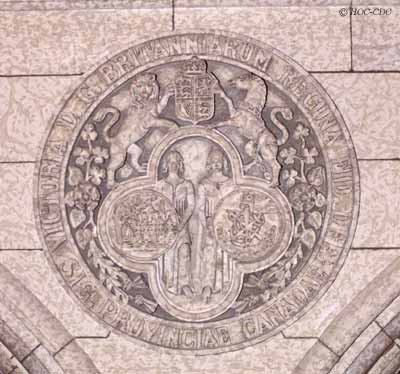
If there was any doubt as to how important this seal is and what it represents to Canada in terms of its history and heritage, then look no further than Canadian Parliament. Here you’ll find two original limestone carvings of the Great Seal of Province – a permanent reminder of the historic union of Lower and Upper Canada.
If you’re interested…
The Royal Canadian Mint is known for being fiercely proud of their country’s history, consequently their most significant issue of 2019 featured the Great Seal of the Province of Canada.
Expertly struck from ten full ounces of the finest .9999 silver with gold plating to a flawless proof finish this coin really has to be seen to be believed. And because of the impressive 76mm diameter you can appreciate every minute detail of the faithful reproduction of the Great Seal.
Just 900 coins were issued worldwide and it completely sold out at the Mint. We have a few of these masterful coins remaining, click here for more information >>
The NEVER-SEEN-BEFORE coins of Canada’s numismatic past…
For decades they’ve been the coins that Canadian public never knew about – a hidden secret in Canada’s numismatic past.
But, now they’ve resurfaced and finally made it onto coins as they were originally destined to do.
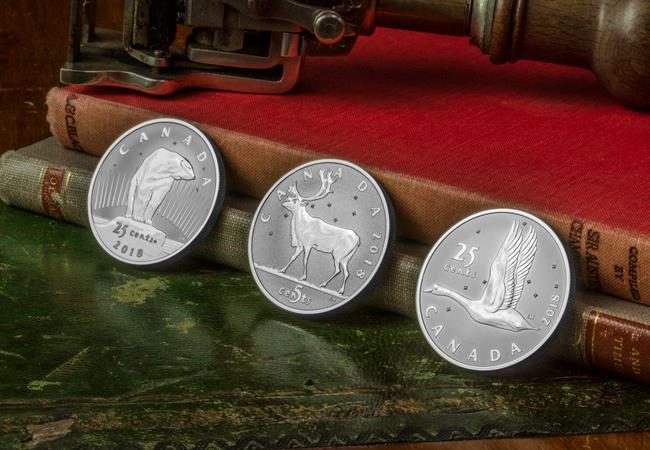
A currency overhaul…
In January 1936, the death of King George V meant that all of Canada’s coins needed new obverse designs; this was the perfect opportunity to update the reverse of all but the dollar coin, too.
A committee was formed and 12 Canadian artists were invited to submit sketches for new circulation coins. The artists were given broad artistic freedom, although suggested themes included Canadian flora and fauna, or scenes highlighting agriculture and industry.
Initial submissions were all rejected, including designs submitted by the designer Emanuel Hahn. It seems his images were dismissed because they did not dispel the view of Canada as a northern wilderness.
Hahn’s three coins never made it onto circulation coinage, but are now considered some of the most beautiful designs in Canada’s history:
25-Cent Polar Bear
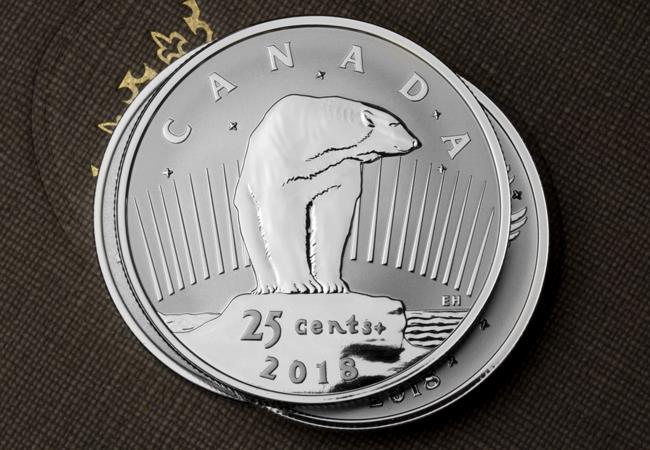
The first 25-cent coin design features a polar bear standing on an ice floe, its head turned toward the right side of the coin, while the open sea is visible behind the mound. A stylistic representation of the Aurora Borealis hangs over the low horizon and stretches across the northern sky, only yielding to the Big Dipper asterism that is a common element on all three coins.
25-Cent Goose
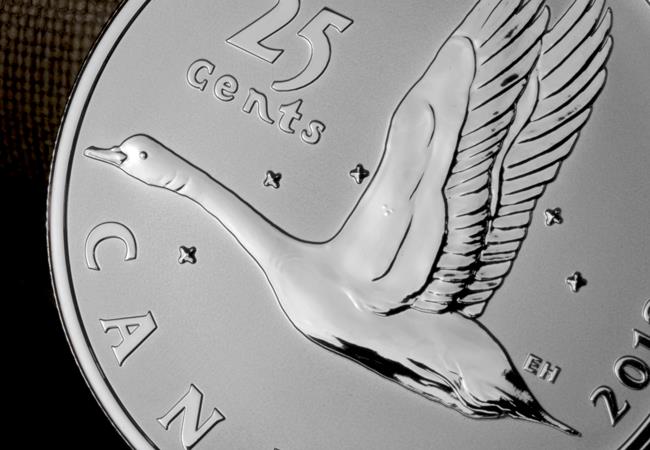
The diamond-like stars are more prominent in the second 25-cent coin design, which centres on a goose in flight. The side-profile view allows for the inclusion of several details, including the flight feathers along the outstretched wings.
5-Cent Caribou
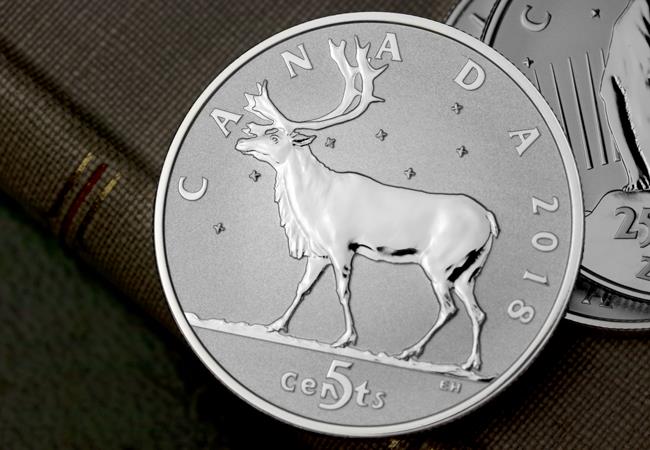
The five-cent coin’s reverse has a remarkable tie to the present: it is Hahn’s original caribou design, the precursor to the one now synonymous with Canada’s 25-cent circulation coin. Viewed in side profile, the ungulate moves beneath the night sky, where the Big Dipper is clearly visible.
The NEVER-SEEN-BEFORE coins, now reimagined…

None of the coins made it into circulation, but they have now been brought to coins for the FIRST TIME by the Royal Canadian Mint as part of a special limited edition Silver Proof set.
The fact that none of these coin designs ever entered circulation makes this set a very unique and special piece of numismatic history – so it’s no surprise that these fascinating coins SOLD OUT at the Mint in a flash.
If you’re interested…
We still have a limited number of these special sets available for UK collectors. But considering how quickly they sold out at the Mint, we don’t expect this stock to be available for long… Click here to add it to your collection now >>

Before Utah, Omaha, Gold, Juno, and Sword there was Dieppe
Now home to around 30,500,the picturesque port of Dieppe on the Normandy coast of France was once the site of what’s perhaps the most conflicting military operation of WWII.
Some hail it as an essential lesson, to help future troops and pave the way for victory on D-Day. Whilst others see it as the most ill-fated and disastrous military effort of The War.
A test of Hitler’s “Fortress Europe”
The year is 1942, and on the morning of 19th August, alongside 1,000 British troops and 50 American Rangers, 5,000 Canadian troops began their assault on the small French port town of Dieppe. This was Canada’s first army offensive in Europe, and the results left many thinking it could well be their last.
Ultimately, the raid was strategically designed to test the Allies’ ability to launch amphibious assaults against Adolf Hitler’s “Fortress Europe”. This would inform future plans to bring about an end to the conflict.
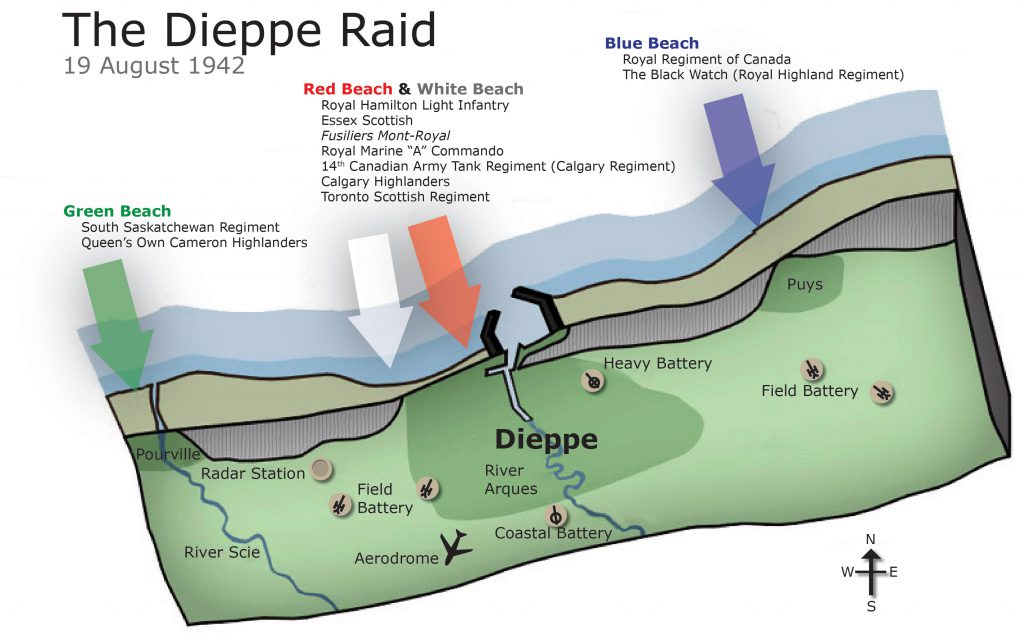
(Image courtesy of The Canadian Encyclopaedia: https://www.thecanadianencyclopedia.ca/en/article/dieppe-raid )
The co-ordinated air, land and sea assault was codenamed Operation Jubilee. Allied forces landed on the shores of Dieppe with the intention of occupying the town for a brief period of time in which they would gain intelligence and entice the Luftwaffe – German Air Force – in to open battle to wear them down.
But from the beginning, nothing went as planned. Less than six hours in the commanders called a retreat.
High costs
The troops arriving via the sea unexpectedly encountered a German fleet, and the ensuing battle at sea robbed the Allies of their element of surprise. This was what they were hoping would give them the upper hand. Out of the four beaches targeted, none of the attacks were classed as successful, resulting in severe loss of life and assets. With the element of surprise lost, the Allies and their armoured support were late to arrive at their designated attack points meaning many were slaughtered with little preparation to defend themselves.
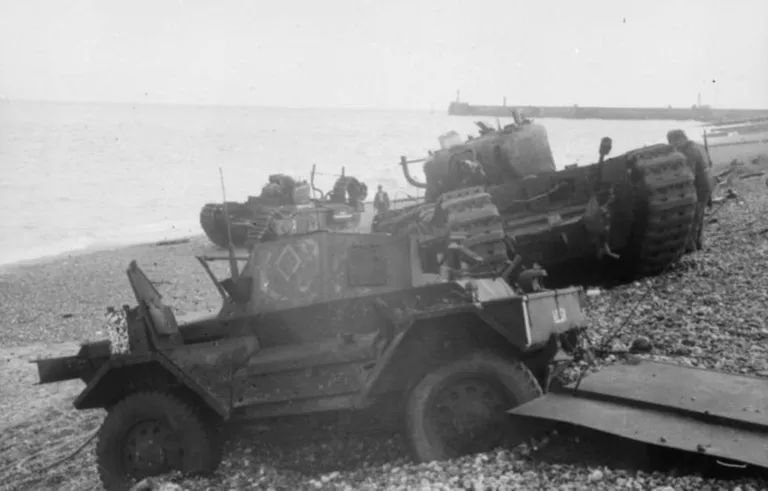
(Image courtesy of ThoughtCo. https://www.thoughtco.com/world-war-ii-dieppe-raid-2361490)
The Calgary Tanks that did make it ashore were poorly equipped for the terrain and struggled to move across the pebbled beaches. Those that did make it across the beach were unable to destroy the enemy’s concrete barriers blocking their path, their guns were not strong enough. Eventually these tanks provided covering fire for the force’s evacuation.
German casualties were light. In comparison the Allies suffered, especially the Canadians: over 900 were killed, 2,400 wounded and a further 1,900 taken prisoner. Fewer than half the Canadians who departed for Dieppe returned.
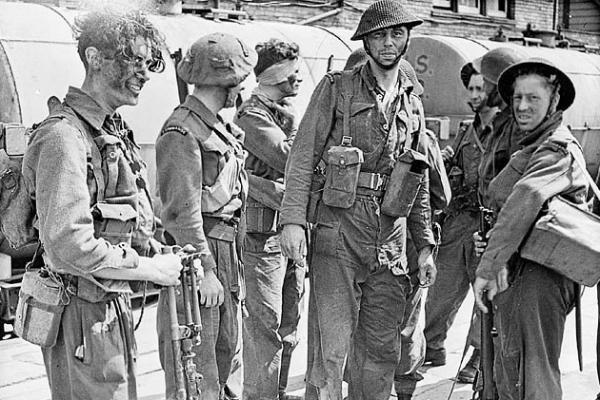
(Image courtesy of France24: https://www.france24.com/en/20170819-france-canada-world-war-two-doomed-dieppe-raid)
Lessons learned
Allied commanders knew the raid was risky. But none imagined it would be such a terrible failure, with so much loss of life. It was believed the element of surprise would be their greatest weapon, allowing landing troops to overcome German defenders and occupy the town. But little thought was given to the importance of air superiority and the need for overwhelming firepower.
Despite its failure, the raid was a pivotal moment in WWII and provided invaluable lessons for the Allies. It made clear the difficulties of assaulting a well-defended port and the need for better intelligence on conditions and communication amongst the troops – they could not rely solely on the element of surprise.
Two years later, the D-Day landings would be backed up by massive naval artillery support, dominance over the skies, and heavy firepower — three essential factors missing at Dieppe. Finally, following D-Day success, on 1st September 1944, Dieppe was liberated.
If you’re interested…
The Royal Canadian Mint issued a 1oz Silver Proof coin to commemorate the 75th anniversary of the Dieppe raid. It’s been specially designed as a powerful tribute to the brave soldiers who sacrificed their lives.
Unsurprisingly this coin is completely sold out at the mint. But we have a limited number available for UK collectors.

